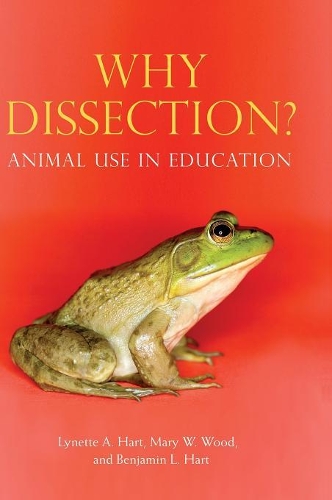
Why Dissection: Animal Use in Education
(Hardback)
Publishing Details
Why Dissection: Animal Use in Education
By (Author) Lynette A. Hart
By (author) Mary W. Wood
By (author) Benjamin L. Hart
Bloomsbury Publishing PLC
Greenwood Press
28th February 2008
United States
Classifications
General
Non Fiction
Educational: Biology
Animals and society / Animal rights - issues and debates
179.4
Physical Properties
Hardback
240
Width 178mm, Height 254mm
652g
Description
Why do students continue to dissect animals in biology classes Why, despite the excellence of teaching resources for veterinary and human medical education that substitute for dissection, do those provided for pre-college students fall short in convenience, flexibility, and coordination with the curriculum Why Dissection Animal Use in Education looks beyond the typical yes-or-no debate about dissection to understand how we came to our current practice of dissection in intermediate and high school biology, even as preparation of health professionals has moved away from dissection. Despite the many forces that support the continued use of dissection in pedagogy, teachers retain much autonomy in how they teach in the classroom, and legislation in many states provide specific requirements for what should and should not be taught in separated science and health curricula, offering students the option to not engage in dissection. Why Dissection walks students, teachers, and parents through these options to help them make more informed choices regarding their science education options.
Reviews
Why does animal dissection continue to be a hallmark of high school biology curricula when it fails to explicitly appear in most educational standards or frameworks This controversial yet enduring facet of science classrooms is dealt with in a comprehensive and well-written new book which is grounded in a rich historical and philosophical context. Of particular interest are the sections that deal directly with national and state standards, and discuss the sometimes conflicting objectives of pre-college science education and the related areas of health and veterinary training. In subsequent chapters, teachers are offered resources which serve to empower them to consider viable alternatives to the practice. The diminishing educational benefits of dissection and the overall welfare of students are prevalent themes in this book. Hart, Wood and Hart note this topic is fraught with emotional arguments, and they adeptly manage to preserve professional and scholarly discourse while respecting the very personal nature of this topic. This book is best for all preservice and practicing biology teachers, curriculum coordinators, and those interested in policy and standards across science, veterinary, and health education. Highly recommended. Upper-division undergraduates and up. * Choice *
Author Bio
Lynette A. Hart is professor in the Department of Population Health and Reproduction in the School of Veterinary Medicine at the University of California, Davis. Mary W. Wood is Librarian in Health Sciences at the Carlson Health Sciences Library, University of California, Davis. Benjamin L. Hart is Distinguished Professor Emeritus of Behavior and Physiology in the Department of Anatomy, Physiology, and Cell Biology in the School of Veterinary Medicine at the University of California, Davis.
